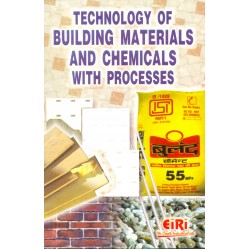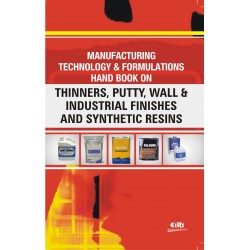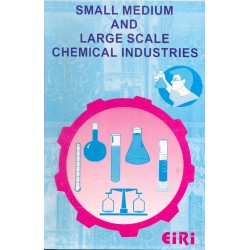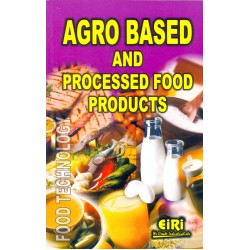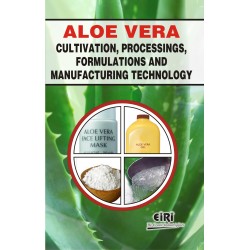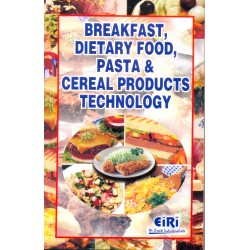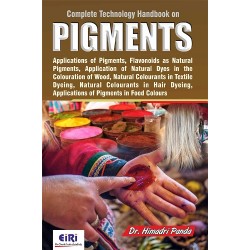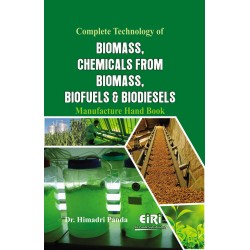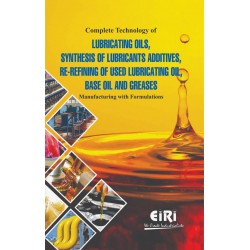technology of synthetic dyes, pigments & intermediates (hand book)
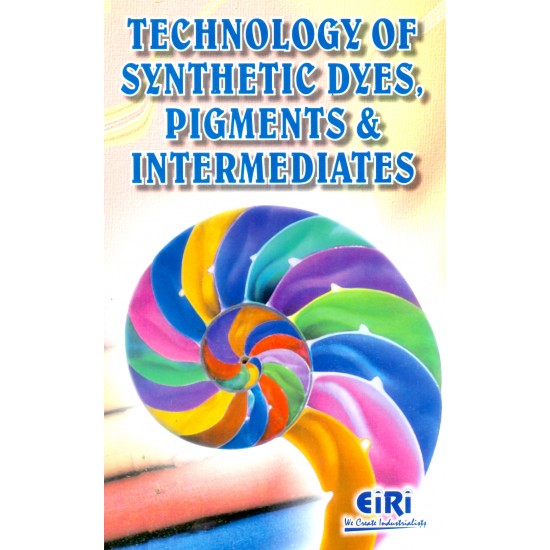
- More than 40 years of experience
- Managed by expert industrial consultants
- ISO 9001-2015 Certified
- Registered under MSME, UAM No: DL01E0012000
- 24/5 Research Support
Get your quesries resolved from an industry expert. Ask your queries before report or book purchase. - Custom Research Service
Speak to the our consultant to design an exclusive study to serve your research needs. - Quality Assurance
All reports are prepared by highly qualified consultants & verified by a panel of experts. - Information Security
Your personal & confidential information is safe & secure.
TECHNOLOGY OF SYNTHETIC DYES, PIGMENTS & INTERMEDIATES
DYES
Requisites of a True Dye
Types of Fibres
Dyeing
Various methods of dyeing
Fastness properties
Historical development from natural to synthetic dyes
Nomenclature of dyes intermediates
Nomenclature of dyes
Historical Development of Dyes
Natural Dyes
Limitations of Natural Dyes
Synthetic Dyes
Important dyestuff intermediates
Disperse azo dye
AZO DYES
The Azo coupling reactions
Congo Red
Diazotization
Coupling
Isolation
Direct Black E
Diazotization of Benzidine
First Coupling
Second Coupling
Third Coupling
Isolation
Direct Blue 2B
Diazotization
Coupling
Isolation
Violet N
Diazotization of Benzidine
Coupling
Isolation
Sky Blue FF
Diazotization of Dianisdine
Coupling
Yield
Ethylation
Direct Light Fast Blue 4GH
Plant for Azo Dyes
Important notes for diazotization and coupling
AZOIC DYES
Azo Coupling Components
Bases
Rapid Fast Colours
Rapidogens
M-Nitro Aniline (Fast orange R)
Properties
Solubility
O-Chloronailine (Fast Yellow G, Gc)
O-Anisidine (Fast Red BB)
Solvolysis
Reduction
Properties
2-Nitro-p Anisidine (Fast Bordeaux G P)
Purification
Nitration
Hydrolysis
Purification
Naphthol AS
Properties of finished product
Naphthol AS-BS
Properties of finished product
Physical Properties of Naphthol AS-OL
Naphthol AS-G
ACID DYES
Simple Acid Dyes
Mordant Acid Dyes
Manufacturing Processes
Acid Orange II
Acid Flourescein
Acid Light Fast Yellow G
Acid Fast Red A
Metanil Yellow
Acid Black 10 BX
BASIC DYES
Diphenyl methane
Triphenyl methane dyes
Thiazines
Oxazine Dyes
Xanthene Dyes
Manufacturing Process
Auramine O
Reaction
Process
Malachite Green
Reaction
Process
Leuco Malachite Green
New Magenta
Process
Safranine T
Aminoazotoluene Preparation
Reduction
Oxidation
Methylene Blue
Nitrosoation
Reduction
Acid Formation
Indamine Formation
Cooking
Isolation
Rhodamine B
Reaction
Process
DISPERSE DYES
Dispersion
Effect of Dispersing Agents
Levelling Agents
Classification
Disperse dyes in the dye bath
Disperse dyes in the fibre
Solacet Dyes (Water Soluble)
Light
Gas Fumes
Sublimation
Wash fastness
Current Research Work
Disperse Yellow 1
Reaction
Disperse Yellow 13
Acid Pasting
Dispersion
Disperse Yellow 42
Reaction
Disperse Orange 1
Procedure
Emulsion of Diphenylamine
Test
Coupling
Disperse Orange 13
Diazotisation of Aniline
Coupling Solution
Coupling
Stage II Diazotization of aniline azo dye
Coupling Solution
Coupling
Dispersion
Disperse Red 4
Acid pasting and Dispersion
Dispersion
Test
Disperse Red 9
Treatment with hydrochloric acid
Disperse Blue 1
Reactions
Reduction
Acetylation of 1:5 and 1:8 diamino anthraquinone
Stage IV Nitration and Reduction
Rduction
Stage V Hydrolysis
Disperse Blue 3
Reaction
Disperse Black 1
Coupling
Test
Disperse Violet B
Reaction
Sulfonation
Nitration
Hydrolysis
Dispersion
VAT DYES
Five Membered Rings
One Heteroatom
Two Heteroatoms
Attachment at 2-position
Attachment at 1-2-position
Attachment at 2-3position
Attachment at 1.9-position
Vat Dyes Containing Six Membered Rings
Attachment at 1-2-position
Attachment at 1.9-position
Attachment at 3.4 -position of benzanthrone
Attachment at 1-position
Attachment at 1.2-position
Attachment at 2.3-position
Attachment at 1.9-position
Fused Ring System
Dyes containing larger ring systems
ANTHRIMIDES AND CARBAZOLES
Anthraquinone-carbazoles
Ring closure with aluminium chloride
Ring Closure with Titanium Tetrachloride
Ring closure with sulphuric acid
Ring closure with Potassium Hydroxide
Oxidation
Characterisation of Anthrmides and Anthraquinone Carbazoles
Spectral Differentiation
Ultraviolet and Visible Spectra
Infrared
C=O Stretching and NH deformation vibrations
VAT DYES & VAT PASTES
Vat Paste
Manufacturing of Vat Pastes
Vat Orange RF Paste
Golden Yellow G.O.K. Paste
Magenta B Paste
Vat Blue 4G Paste
Vat Pink R Paste
Vat Blue 4B Paste
Vat Black BB Paste
Vat Green FB Paste
Vat Brown RRO Paste Special
Vat Violet 2R Paste
Vat Violet GCN Paste
Vat Scariet GGN Paste
Vat Grey 3B Paste
Manufacturing Process
Indanthrene Rubine R
Formula
Ethylation of Anthrapyrazole yellow
Acid pasting Anthrapyrazote
Indanthrene Grey M
Stage III Cyclisation of anthrimide to carbazoles
Vat Red
Stage -1 Oxidation of 1-Nitro 2 methyl anthraquinone
Stage II
Microscopic Test
Purification
Vat Black
Reduction
Introduction
Procedure
Indanthrene Dark Blue Boa (Violanthrone)
Indanthrene Golden Orange 3-G
i. Anthrimide Formation
ii. Indanthrene Golden
Orange 3G (carbazol)
Indanthrene Brilliant Green Feb
2:2' Dibenzanthroanl
Dihydroxy dibenzanthrone
Indanthrene Brilliant Green FFB Crude
Standardisation of Vat Dyestuffs
The Spray drying method
The W & P Mixer Method
Indentification of Vat Dyes
Procedure
Sulphuric Acid or Nitric Acid Test
Alkaline Hydrosulphite Test
Acid Hydrosulphite Test
INDIGOLD AND THIOINDIGOLD DYES
Technical Synthesis of Indigo
Thioindigold dyes
Indigo
Brilliant Indigo-G
Thioindigo Red B
Procedure
Algol Orange-RF
Standardisation
Vat Printing Brown-G
INDIGOSOL
Anthrasol Brillant Orange IRK
Anthrasor Blue IBC
Oxidation to tetraester
Identification of Leuco
Ester Vat Dyes
FLUORINATION OF DYES
Hydorofluric Acid
Material of Construction
Fluorine
Material of Construction
Indanthrene Brilliant Violet F RK (C.I. 63350)
Indanthrene Printing Blue HFG
Nuclear Fluorination
SULPHUR DYES
Thionation
Types of Sulphur Dyes
Properties of Sulphur Dyes
Manufacturing Process
Sulphur Black-T
Hydrolysis
Oxidation
Grain Standardisation
Immedial Orange C
Sulphur Orange 1
Property
Hydron Blue R Powder
R Base
Hydron Blue R powder
Procedure
REATIVE DYES
Classification of Reactive Dyes
Reactive dyes containing a cyanuric chloride nucleus
Reactive dyes containing a chlor pyrimidine nucleus
The vinyl sulfone reactive type
Reactive dye containing an epoxy group
Pyridazone
Dichloroquinoxaline
Acrylamide
Methylolated Nitrogen
Reactive dyes containing a Cyanuric Chloride Nucleus
Vinyl Sulfone Reactive Dyes
Chemistry of tetrachloropyrimidines
Reactive Dyes based on Epoxides
Other types of Reactive Dyes
Application Purification of Reactive Dyes
Advantage and Limitations of Reactive Dyes
Fabric Preparation
Washing Off New Developments of Reactive Dyes
Kayacelon Reaction Dyes
Cibacron C Dyes
Procion Supra Dyes of (I.C.I)
Procion HEXL Dyes
Prociline N Dyes
Reactive Red
Reactive Rose Red
Reactive Violet
Reactive Orange
Reactive Yellow
Reactive Red M8B
Acetylation of H Acid
Diazotisation of Tobias Acid
Reactive Dyes with Trichloropyrimidine As Reactive Group
Preparation
Reactive Dyes with 2.3-Dichloroquinoxaline
6-Carbonyl Chloride
as Reactive Group
Preparation
Reactive Dyes with Chloroacetyl As Reactive Group
Reactive Dyes with 6-Amino-2 Chlorobenzothiazole-5 Sulphonic
Acid as Reactive Group
Preparations
Properties of Cyanuric Chloride
Chlorosulfonic Acid
Identification of Reactive Dyes
Procedure
INTERMEDIATES FOR DYES AND PIGMENTS
Electrophilic
Nucleophilic substitution
Free radical
Sulphanilic Acid
Metanilic Acid
p-Aminophenol
Reduction
o-Phenylene Diamine
Property
o-And-p Nitrochlorobenzene
p-Phenylenediamine
Reduction
Control Test
1-Phenyl 3-Methyl 5-Pyrazolone
Quality of phenyl methyl pyrazolone
Tobias Acid
Quality
H-Acid
1-amino-2 Naphthol-4 Sulphonic Acid
Schaeffer's Acid
J-Acid
Alkali Fusion of Amino J-Acid
N-Phenyl J-Acid
Anthraquinone
2-chloro Anthraquinone
2-Amino Anthraquinone
1-Hydroxy Anthraquinone
Anthraquinone 1-sufonate potassium salt
1-Hydroxy Anthraquinone
1:4 Dihydroxy Anthraquinone-(quinizarine)
Purification
1:4 Diaminoanthraquinone
Test for completion
Oxidation
1. Amino-2 Methyl- Anthraquinone
2. Methyl Anthraquinone
1-Nitro-2 Methyl anthraquinone
Purification of crude product
Amino-2 methylanthra quinone
Benzanthrone
FLUORESCENT BRIGHTNERS AND OPTICAL WHITENING AGENTS
Chemical Constitution
Stibene derivatives
Derivatives of dibenzothiophene-5 5-dioxide
Azoles
Monoazoles
Bisazoles
Coumarian Derivatives
Derivaties of 6-memberedring heterocycles
Derivative of pyrazoline
Finishing of Commercial Optical Brightners
Pastes
Powder
Instant finish (easily water soluble)Liquid forms
Stable Dispersions
Evaluation and testing
Active strength of fluorescent brightners
Uses
Detergent Brightners
Brightners for the textile industry
Natural Fibres
Brightner for cellulose
Brightners for wool
Brightners for synthetic fibres
Brightners for Cellulose Acetate
Brightners for Polyamide fibres
Brightners for polyester fibres
Brightners for Acrylic fibres
Brightners for Polyacrylonitrile fibre
Multi fibre brightening
Paper Brightners
Brightners for plastics
Brightners for Cosmetic Preparations
Brightners for Miscellaneous Application
Biological aspects
TYPICAL COMMERCIAL BRAND NAMES OF TEXTILE COLORANTS, ACCESSORY PRODUCTS
ETC.
CLASSIFICATION OF PIGMENTS AND EXTENDRES
Inorganic Pigment
Organic Pigment
Difference between Organic and Inorganic Pigment
Difference between Pigments & Dyes
Classification of Pigments
Inorganics
White
Black
Red Brown
Yellow Orange
Green
Blue Purple
Metallic Powder
Organic Pigments
Lakes
Metal Toners
Azo Pigment
Yellow Pigments
Vat Pigment and Polycyclic Pigments
Phthalocyanines Blue Green
Extenders
Types of Extenders Pigment
Whiting Calcium Carbonate (Natural)
Calcium Carbonate (Synthetics)
Barytes
Barium Sulphate
Silicates
China Clay (Kaolin)
Silica (Silicon Dioxide)
INORGANIC PIGMENTS
Titanium Dioxide
Manufacture
Sulphate process
Wet treatment
The chloride process Application of Titanium pigments
Paper
Textile
Plastics
Ceramics
Rubber
Plastics
Ceramics
Rubber
Miscellaneous
Iron Oxides
Manufacture Uses
Synthetic Iron Oxide
Manufacture
Calcined Coppers Red
Ferrite Red
Precipitated Synthetic Red Iron Oxide
Calcined Black (Red) Iron Oxide
Uses
Chromates
Zinc Chromate
Lead Chromate
Primrose Yellow
Light or Lemon Yellow
Medium Yellow
Chrome Orange
Manufacture
Chromium oxide green
Cadmium pigments
Manufacture
Zinc Oxide
From Zinc Metal (French or Indirected Process)
From Zinc Oxide Ores (American or Direct process)
From Zinc Sulphide Ore
Zinc Sulphide
Lithopone
Zinc Phosphate
Metallic Pigment
Copper and Copper Alloy Flake Copper
Alloy Flake Powders
Zinc Pigment
Stainless Steel Flake Pigment
Carbon Blacks
Uses
Ultramarine Pigments
Prussian Blue
AZO PIGMENTS
Red Pigments
Permanent Reds
The Pyrazolone Red
Yellow Pigments
Manufacture of azo Manufacture of azo pigments
Pigment Yellow G
Procedure
Diazotization
Coupling Component
Pigment Yellow 10G
Procedure
Diazotization
Coupling preparation
Coupling
Benzidine Yellow
Diazotization
Coupling Preparations
Coupling
Benzidine Orange
Diazotization
Preparation of Coup Ling component
Coupling
HIGH GRADE ORGANIC PIGMENTS
Azo condensation
Vat Pigments and Related Compounds
Anthraquinone pigment\\\
Thioindigo Pigments
Dioxazine
Quinacridone
Quinacridone
Toning White Enamels
Isoindolinone
Applications
Phthalocyanine
PHTHALOCYANINES
Manufacturedine
Methods for formation of pigments from crude
Acid pasting
Acid slurry
Concentration of the sulfuric acid
Amounts of the sulfuric acid
Slurrying time
Temperature of the slurry
Production of b-form pigment by salt grinding
Manufacture of metal free phthalocyanina
Manufacture of phthalocyanine green
Properties Phthalocyanines
Flocculation, Flotation and Flooding
Control of flocculation
Floatation
Flooding
Application of phthalocyanine pigments
Phthalocyanine dyes of Textile materials
Phthalocyanine formation in the fibre
FLUORESCENT PIGMENTS
Photostability of Fluorescent Pigments
Fluorescent Application
Phosphorescent
Luminous Pigments
Properties and characteristics
Uses
Use in Plastic
Peart Luster Pigments
QUALITY CONTROL AND EVALUATION OF PIGMENTS
Quality Control
Evaluation of Pigments
Physical Properties of Pigment
Moisture Content
Bulking Volume
Mesh Residue
Particle Size
Procedure
IS Specification
Solvent Stability
Aim
Importance of the test
Procedure
IS Value
Water Soluble Matter
pH of the Pigments
Oil Absorption
Raw Materials required
Procedure
Defination of Oil Absorption
Opacity
Colour
By Automatic Muller
Mass Tone
Apparatus required
Reduction Tone
Raw Materials Used
Other materials required
Procedure
Raw Material required
Dispersibility, Texture and Rheology
Stability and Fastness
Other Properties
To Destermine the Sp.
Gravity of Pigment
To determine percentage purity of crude
phthalocyanine
Volumetric Method for the determination of copper in Cuprous
Chloride
Estimation of Organically
Bound hlorine
PIGMENTS FOR TEXTILES
Viscosity of Batch
Amount of Grinding Media
Amount of Material to be Ground
Handy Hints for Milling
Anionic surfactants
Non-ionic surfactants
Auxilliary or water retaining agents in pigment emulsion
Mill Cleaning Methods
Formulations of different pigment Emulsions
Binder
Thickeners
Water Retaining agents
Catalysts
Preparation of 10% Binder Reduction
Thickening
Recipe for printing paste
After treatments
PIGMENTS FOR PAINTS
Mass Tone Colour
Under Tone Colour
Particle Shape
Particle Size Distribution Dispersibility
Effect on Vehicle Viscosity
Weathering
Parameters of pigment performance in paint industry
Dispersion
Surface Treatment
Particle Size
Surface area and characteristics
Mechanical Properties
Paint
Drying
Flushed pigments
Fluorescent pigments
Pigments
Fastness Properties
Light Fastness
Fastness to solvents
Heat Fastness
Chemical Fastness
General Paint
Pigment tailored to suit many specific uses are now available
Characteristics and fastness properties of the various classes of pigment
Dinitroaniline Orange
Toluidine Reds
Hansa Yellow Pigments (pigment yellows)
Polycyclic Pigments
Manufacture of Paint
Suitability of different pigments for use in various paints systems
Catalysed Paints
Unsaturated polyester paints
Acid curing paints
Polyurethane paints
Cold curing epoxy paints
Epoxy stoving enamels
Metallic finishes
Colouration of Aqueous Paint Systems Particularly of Emulsion Binders
Pigment paste from pigment Formulation of Different Pigment Paste
Separation and Identification of pigments from synthetic enamel
PIGMENTS FOR PRINTING INKS
Fastness to Light
Fastness to alkali
Fastness to acid
Transparency
Dispersion
Organic pigment for printing ink should offer
PIGMENTS FOR PLASTICS, RUBBER AND COSMETICS
Selection of pigment
Colouring Techniques
Colouring plastic materials for injection moulding
Colouration of moulding compounds
Phenoplasts
Colouring Thermoplasticslastics
Plasticised polyvinyl chloride
Rigid PVC
Polyethylene
Polypropylene
Polystyrene
Polyurethane foams
Pigments for Rubber
Vulcan Fast and Vulcan Pigments
Colourant for Cosmeticsmetics
Miscellaneous applications
CHEMICAL PLANT DATA FOR DYES AND PIGMENTS
Plant Layout
Typical weaknesses in a poor plant layout
Materials Handling
Reduction in time
Reduction in handling
Equipment design
Summary
Material of construction
Metals
Cast Iron
White Cast Iron
Plain Carbon Steel
Low carbon steel of Mild steel
Medium carbon steel
High carbon steel
Alloy Steel
Low alloy steel
High alloy steel
Stainless Steel
Non Metals
Cement and Stoneware Product
Glass
Rubber
Plastics
Other Materials
Wood
Linings for Chemical Plants and Equipment
Important Equipments for Dyes, Pigments and Chemical Plant
Autoclaves or Pressure Vessels
Reaction kettle or Reactor
Materials of Construction
Type and shape of reactor
Agitation
Jacket Design
Glass Line Reactor
Mechanical Resistance
Thermal Resistance
Testing
Vacuum Distillation Plant
Filter Presses
Filtrate discharge
Dryers
Spray dryers
Advantage of Micropulverizer
Research and Development
PLANT ECONOMICS OF DYE & DYE INTERMEDIATE
PLANT ECONOMICS OF METHYLE BLUE
PLANT ECONOMICS OF ACID BLOCK DYE
PLANT ECONOMICS OF GREEN OXIDE AND BLUE OXIDE
PLANT ECONOMICS OF AZO DYE (RHODAMINE-B)
PLANT ECONOMICS OF DYES (ANTHRAQUINONE, B-NAPHTHOL ETC.)
SUPPLIERS OF PLANTS, MACHINERY AND EQUIPMENTS
Engineers India Research Institute (EIRI) is a renowned name in the industrial world for offering technical
and financial consultancy services.
EIRI services are:
Detailed Feasibility Reports
New Project Identification
Project Feasibility and Market Study
Identification of Lucrative Industrial Project Opportunities
Preparation of Project Profiles / Pre-Investment and Detailed Feasibility Studies,
Market Surveys / Studies, Market Survey Cum Detailed Techno-Economic Feasibility Reports
Project Reports in CD Roms
Identification of Plant /Process/Machinery and Equipment, Industrial General Guidance for setting up new
industrial projects.
Our most up-to-date and Technologically Advanced Industrial Project Reports, categorized with respect to
Financial Outlays and Sector – wise Classification are immensely useful for :
Existing Small or Medium Scale Industrialists facing competition from large houses
Young Entrepreneurs dreaming to start their own industrial enterprise
Young Graduates and Professionals wishing to begin their career
Industrialists interested in Debottlenecking their capacities & New Product – Lines
Large Industrial Houses pursuing Expansion, Growth and Diversification Plans
How to Make Project Report?
Detailed Project Report (DPR) includes Present Market Position and Expected Future Demand, Technology, Manufacturing Process, Investment Opportunity, Plant Economics and Project Financials. comprehensive analysis from industry covering detailed reporting and evaluates the position of the industry by providing insights to the SWOT analysis of the industry.
Each report include Plant Capacity, requirement of Land & Building, Plant & Machinery, Flow Sheet Diagram, Raw Materials detail with suppliers list, Total Capital Investment along with detailed calculation on Rate of Return, Break-Even Analysis and Profitability Analysis. The report also provides a birds eye view of the global industry with details on projected market size and then progresses to evaluate the industry in detail.
We can prepare detailed project report on any industry as per your requirement.
We can also modify the project capacity and project cost as per your requirement. If you are planning to start a business, contact us today.
Detailed Project Report (DPR) gives you access to decisive data such as:
- Market growth drivers
- Factors limiting market growth
- Current market trends
- Market structure
- Key highlights
Overview of key market forces propelling and restraining market growth:
- Up-to-date analyses of market trends and technological improvements
- Pin-point analyses of market competition dynamics to offer you a competitive edge major competitors
- An array of graphics, BEP analysis of major industry segments
- Detailed analyses of industry trends
- A well-defined technological growth with an impact-analysis
- A clear understanding of the competitive landscape and key product segments
Need Customized Project Report?
- Ask for FREE project related details with our consultant/industry expert.
- Share your specific research requirements for customized project report.
- Request for due diligence and consumer centric studies.
- Still haven't found what you're looking for? Speak to our Custom Research Team
About Engineers India Research Institute:
Our Approach
- Our research reports comprehensively cover Indian markets (can be modified as per your country), present investigation, standpoint and gauge for a time of five years*.
- The market conjectures are produced on the premise of optional research and are cross-accepted through associations with the business players
- We use dependable wellsprings of data and databases. What's more, data from such sources is handled by us and incorporated into the report
Why buy EIRI reports?
- Our project reports include detailed analysis that help to get industry Present Market Position and Expected Future Demand.
- Offer real analysis driving variables for the business and most recent business sector patterns in the business
- This report comprehends the present status of the business by clarifying a complete SWOT examination and investigation of the interest supply circumstance
- Report gives investigation and top to bottom money related correlation of real players/competitors
- The report gives gauges of key parameters which foresees the business execution





















